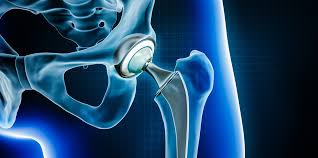Introduction
Recovering from a total hip replacement (THR) is a journey that requires vigilance and clear guidance. Understanding what is normal and when to seek help is crucial for a successful outcome. This guide, adapted from major orthopaedic and health quality organizations, uses a simple traffic light system to help you monitor your recovery day-to-day. Learn to recognize the Green Zone (All Clear), the Yellow Zone (Warning – Call Your Doctor), and the Red Zone (Medical Alert – Call 911/Go to ER).

Every Day: Your Routine for Success
- No smoking! Avoid second-hand smoke.
- Balance activity and rest. Don’t push yourself too hard.
- Resume a well-balanced diet or the specific diet your physician recommended.
- Take your medication as prescribed. Avoid NSAIDs (Advil, Naproxen, Ibuprofen, etc.) until your doctor tells you to take them.
- Monitor your surgery site daily.
| Zone | Status & Action | Key Indicators |
| 🟢 Green Zone | All Clear. This is the safety zone. | * Pain that is controlled by prescribed pain medications. |
| * No swelling, redness, or draining at your surgery site. | ||
| * Keeping all appointments with physical therapy and your doctor. | ||
| 🟡 Yellow Zone | Warning. Call your doctor if you have: | * Pain that is not controlled by prescribed pain medications. |
| * Fever higher than 100.5 degrees. | ||
| * Swelling that seems to be worsening, redness, opening of wound, cloudy or bloody drainage from your surgical site. | ||
| * Trouble tolerating physical therapy well. | ||
| 🔴 Red Zone | Medical Alert! Go to the emergency department or call 911 if you have: | * A fall at home. |
| * Shortness of breath or chest pain. |
Source and Disclaimer:
American Academy of Orthopaedic Surgeons. Total Hip Replacement. Available at: https://orthoinfo.aaos.org/en/treatment/total-hip-replacement/ Cleveland Clinic. A Patient’s Guide to Total Joint Replacement and Complete Care. Available at: https://my.clevelandclinic.org/-/media/files/ortho/patient-education/total-joint-replacement-patient-guide.pdf?la=en.
This material was adapted for use by Health Services Advisory Group (HSAG) Hospital Quality Improvement Contractor (HQIC), under contract with the Centers for Medicare & Medicaid Services (CMS), an agency of the U.S. Department of Health and Human Services, from material originally prepared by Atom Alliance QM-QIO. The content presented do not necessarily reflect CMS policy. Publication No. MI-HSAG-XT-04072021-07
This information is intended for educational purposes only. HSAG and Clare does not represent or guarantee that this information is applicable to any specific patient’s care or treatment. This content does not constitute medical advice from a physician and is not to be used as a substitute for treatment or advice from a practicing physician or other healthcare provider.
- 10 Essential Safety Tips for Working with Elders Experiencing Vision Loss
- Mood and Your Health: Tracking Your Emotional Well-being
- A Practical CBT Toolkit for Anxiety: How to Use These Worksheets Anytime You Need Them
- Coping Skills for Depression: A Simple, Do-Today Toolkit (Mindfulness + CBT Thought Record)
- Pain Management for Older Adults: A Friendly, Practical Guide for Families and Care Teams


